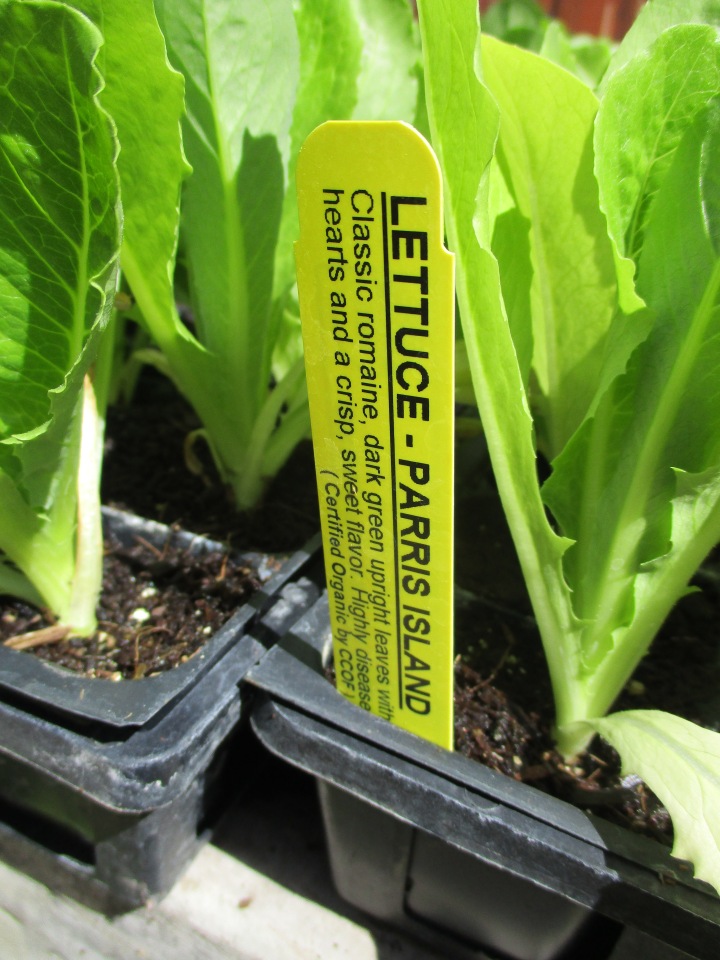 Right smack in the middle of the warm part of summer, it is already time to be getting ready for autumn gardening. This involves more than just ordering our autumn planted spring bulbs while the selection is still optimal. Most of us purchase bulbs from what is available in nurseries when they are in season anyway. Seed that gets sown in the next few weeks is a more immediate concern.
Right smack in the middle of the warm part of summer, it is already time to be getting ready for autumn gardening. This involves more than just ordering our autumn planted spring bulbs while the selection is still optimal. Most of us purchase bulbs from what is available in nurseries when they are in season anyway. Seed that gets sown in the next few weeks is a more immediate concern.
The majority of cool season vegetables will get planted later, when the seasons actually start to change to become . . . well, cool. Seed for beets and carrots gets sown directly in about a month, followed by pea seed even a bit later. At about that same time, many of us will plant small seedlings of other cool season vegetables, like broccoli, cauliflower, cabbage, lettuce, spinach and kale.
For many of us though, it is not that simple. If we want varieties of these cool season vegetables that are not likely to be available as seedlings in nurseries later, we must grow our own from seed. Whether they get sown directly into the garden, or into flats to be grown as seedlings to be planted later, broccoli seed should be sown about now. By the time it gets to growing, it will be autumn.
Seed purchased online or from mail order catalog should be ordered by now. It is not too late for broccoli if the seed arrives and gets sown soon. Cauliflower and cabbage seed gets sown within a month or so, as late August becomes early September. Lettuce and spinach seed should wait half way through September, like beet and carrot seed. Kale seed can wait until after September.
Seed for secondary phases of most of these cool season vegetables can be sown early next year.
In the meantime, warm season vegetables must continue to be harvested very regularly. If they stay in the garden long enough to get tough and bland, they also interfere with continued production. Foliar herbs can be harvested for drying just about any time they are fresh and not blooming. Regular harvesting inhibits bloom, and therefore promotes more of the desirable foliar herbal growth.
Living in Singapore is always hot! I have planted some lettuce seeds in a pot and they started to grow immediately but now they’ve stopped! I hope they’ll continue their grow and I’ll be able to enjoy it 😊
LikeLiked by 1 person
Warmth and aridity are why I did not grow lettuce in the garden when I was in the Santa Clara Valley. Most of the lettuce here comes from the Salinas Valley, just a few miles away, but the climate is remarkably different there. Although it is likely warmer for a longer time in Singapore, it is not likely as arid. Humidity would help.
LikeLike
Great to read your thoughtful advice about optimal planting times. I get quite cross when I see (as is often the case) the big supermarket-style garden departments selling seedlings when it’s way too late to plant them successfully.
LikeLiked by 1 person
Oh, that is so frustrating, especially knowing how little those who will likely purchase them know about horticulture.
LikeLiked by 1 person
I am in the midst of all this now–and we’re thinking about the broccoli, too. It seems all growing advice comes from New England, the Northwest, or a microclimate like yours. I bumble along, but the broccoli note gives me pause. We planted seedlings late one year and harvested in February, which was lovely, so I’m thinking seed in the the ground now would work. If it doesn’t it cost a pack of seed! And maybe I should add some cauliflower to that…
LikeLiked by 1 person
My gardening articles are from my gardening column, which is for this region. Only one of the newspapers I write for, the Canyon News, is outside of Sunset Zones 15 and 16 (although the regions served by the newspapers extends outside of those zones). As much as I enjoy making them available to anyone who wants to read them, I can not make them appropriate to every climate zone. Yeast ago, I actually enjoyed writing just for the Santa Clara Valley. Nothing works like that nowadays..
LikeLiked by 1 person
I know! But a lot of times I can glean good info and adjust it. Or learn about a plant I’ve never seen.
LikeLiked by 1 person